
Miami Roof Insurance in 2025: Your Updated Guide to Claiming Hurricane Damage (Without Getting Denied!)
This guide will provide you with the tools needed to ensure your hurricane roof damage claim gets approved in 2025.
As a homeowner in Miami, you’re no stranger to the unique challenges our vibrant, sun-drenched, yet incredibly humid climate presents. From the brilliant sunshine to the sudden downpours, your roof stands as the primary guardian of your home, constantly battling the elements.
So, when you start to notice unsightly dark streaks, mysterious black patches, or even greenish fuzzy spots appearing on your shingles, it’s natural to feel a pang of concern.
What exactly are these unwelcome guests? Often, they’re signs of mold on your roof, a common issue in our subtropical environment.
But this isn’t merely an aesthetic blemish that detracts from your home’s curb appeal. Mold growth can be a serious indicator of deeper problems, potentially leading to significant structural damage over time and even posing health risks to your family.
Understanding its causes and how to effectively combat it is paramount to protecting your most valuable asset.
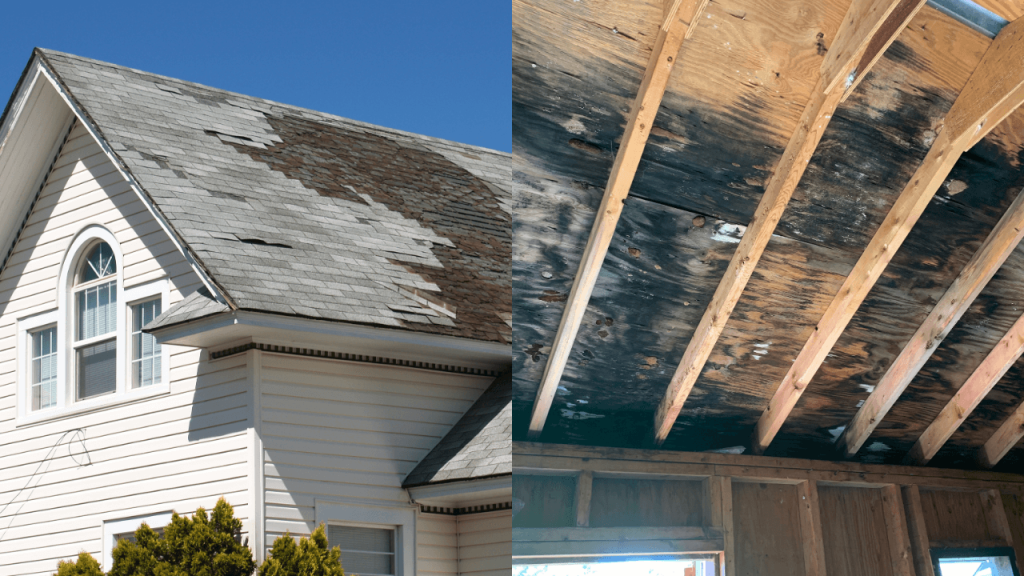
Get a no-obligation quote today
Simply fill out the form below and take the first step toward expert service.
Mold thrives in specific conditions, and Miami’s climate often provides the perfect environment. Understanding these factors is the first step toward prevention.
Humidity accumulation is a primary culprit. Our frequent rains, coupled with high atmospheric humidity, mean that water can linger on your roof for extended periods. This can also be exacerbated by condensation from temperature fluctuations or from poor ventilation, creating a persistently damp environment where mold can flourish.
Prolonged shade from large trees or nearby buildings can prevent your roof from drying out quickly after rain or morning dew. Without direct sunlight to evaporate moisture, shaded areas remain damp for extended periods, creating an ideal breeding ground for mold, moss, and algae.
The growth of algae and fungi is extremely common in warm, humid areas like Florida. These organisms often appear as dark streaks (especially the black streaks of Gloeocapsa magma algae) or greenish patches. While not always mold themselves, their presence indicates conditions favorable for mold growth, as they all thrive in similar moist environments.
Poor attic ventilation is a significant contributing factor. When your attic isn’t properly ventilated, heat and moisture can become trapped and build up inside. This trapped warmth and humidity can contribute to condensation on the underside of your roof deck, accelerating microbial growth not just in the attic but also on the exterior surface of your shingles.
Clogged gutters prevent proper water drainage from your roof. When leaves, debris, and shingle granules accumulate in your gutters, water can back up, overflow, and even penetrate under your shingles. This standing water creates hidden moisture accumulation points, fostering mold growth in areas you can’t easily see.
Organic debris on the roof, such as fallen leaves, twigs, pine needles, or even dirt, acts like a sponge, trapping moisture against the shingles. This creates persistently damp spots that are perfect for mold to take hold and spread. Regular cleaning is essential to remove these mold-encouraging elements.
Being able to identify the early signs of mold can save you from bigger problems down the line.
Watch out for:
Risks:
Prevention is always better than cure, especially when it comes to mold. Here’s how to keep your Miami roof mold-free:
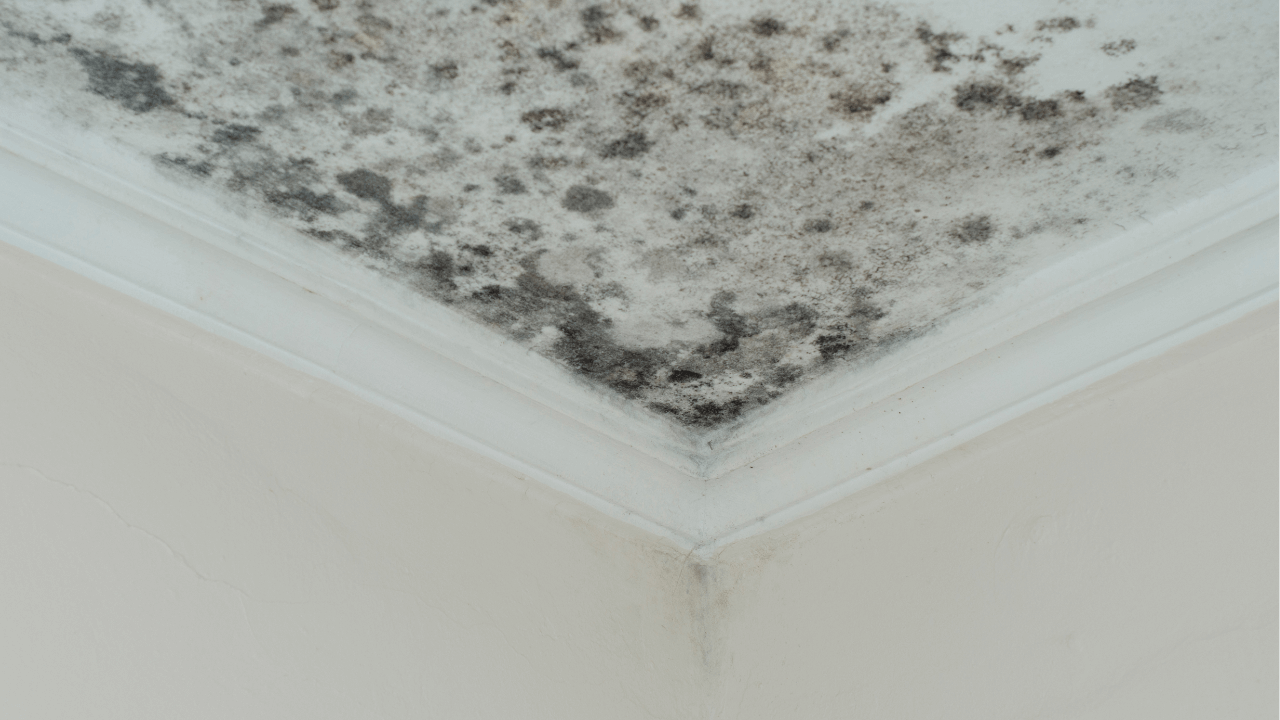
When considering a roof replacement, opting for mold-resistant materials is a smart, long-term investment, especially for Miami’s humid climate. These materials are engineered to withstand the unique challenges of our environment.
Look for synthetic or composite materials specifically designed to resist humidity, heat, and microorganisms. Some excellent choices include:
Notice dark stains or suspect mold on your roof? At Roofing Nation Miami, we can help.
Our specialized team performs professional inspections and offers solutions tailored to the local climate. From thorough cleaning and preventative treatments to full roof replacements with mold-resistant materials, we’re dedicated to protecting your home.
Request your free diagnosis today and discover how we can durably protect your home.
Mold stains typically appear as spreading dark patches or streaks and can sometimes have a musty odor. Dirt, on the other hand, usually doesn’t spread in the same way and lacks that characteristic smell. A professional inspection can confirm the exact cause of the discoloration.
Yes, it can be. Beyond the aesthetic damage, mold can degrade roofing materials, potentially leading to leaks and structural issues. More importantly, mold spores can become airborne and trigger allergies, asthma, and other respiratory problems for sensitive individuals inside your home.
We recommend at least one professional roof inspection per year, preferably before hurricane season. It’s also wise to inspect your roof visually after any intense storms or periods of heavy rain to check for new damage or mold growth.
No, using a high-pressure washer on your roof is generally not recommended. It can strip away the protective granules from asphalt shingles, damage the shingle material itself, and even force water underneath the shingles, leading to leaks. A professional cleaning with appropriate chemical solutions is a safer and more effective method.
Shingles infused with copper or zinc granules, as well as high-quality composite or synthetic shingles, are specifically designed to resist mold and algae growth. Metal roofs are also highly mold-resistant.
Yes, significantly. Overhanging tree branches block sunlight, preventing your roof from drying out properly. They also drop leaves and debris, which trap moisture and create ideal conditions for mold and algae to thrive. Regular tree trimming is crucial for prevention.
Yes, we offer specialized services for roof prevention and maintenance, which can include the application of anti-mold treatments or coatings to inhibit microbial growth and extend your roof’s life.
Not always. While prolonged dry heat can help dry out some mold, Miami’s persistent high humidity often counteracts this. Mold can survive and even thrive in hot, humid conditions. Active cleaning and preventative measures are still necessary to fully address a mold problem.

This guide will provide you with the tools needed to ensure your hurricane roof damage claim gets approved in 2025.

Discover how to leverage tax credits for your new roof in Miami. Do you qualify for 30% savings? We explain step-by-step. Get your free estimate!
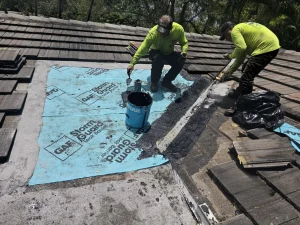
In this 2025 guide, we’ll analyze the three main types of underlayment (asphaltic, synthetic, and self-adhering), their advantages in tropical climates, and the red flags every homeowner should know before hiring a roofing service.
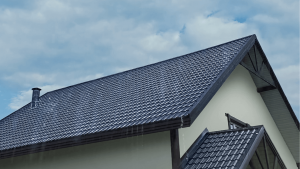
Based on hundreds of projects, we answer the 5 most frequent inquiries we receive, with details on installation times, rain policies, flexible payment options, and warranty coverages according to the 2025 code.

This article details the certified process used by experts, from deck preparation to premium materials like Asoflex SBS and Poly IRX, specifically designed for our tropical climate.
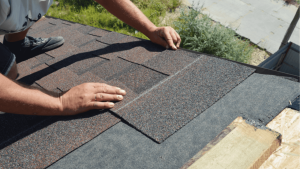
Below, we’ll uncover the three biggest mistakes homeowners make when attempting to repair their roofs on their own in Miami and explain why current regulations favor, and even require in many cases, the expertise and certification of professionals.
® All rights reserved,
Roofing Nation LLC.
10830 NW 138th St #1, Hialeah
Gardens, FL 33018
(Monday – Sunday)
© Copyright Roofing Nation. All Rights Reserved 2025